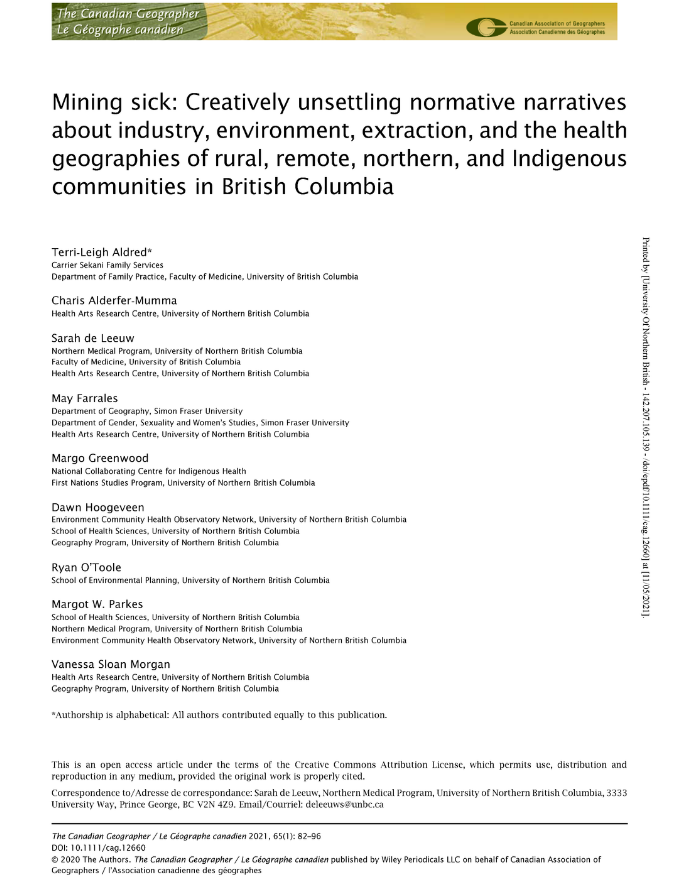
Rural, remote, northern, and Indigenous communities on Turtle Island are routinely – as Cree Elder Willie Ermine says – pathologized. Social science and health scholarship, including scholarship by geographers, often constructs Indigenous human and physical geographies as unhealthy, diseased, vulnerable, and undergoing extraction.
What, however, are the consequences of imagining and constructing people and places as “sick”? Mining sick: Creatively unsettling normative narratives about industry, environment, extraction, and the health geographies of rural, remote, northern, and Indigenous communities in British Columbia posits that constructions of “sick” geographies fulfill and extend settler (often European white) colonial narratives about othered geographies. Rural, remote,northern, and Indigenous geographies are discursively “mined” for narratives of sickness.
Drawing from multi-year, relationship-based, cross-disciplinary qualitative community-informed experiences, and anchored in feminist, anti-colonial, and anti-racist methodologies that guided creative and humanities-informed stories, this paper concludes with different stories. It unsettles settler-colonial powers reliant on constructing narratives aboutsickness in others and consequently reframes conversations about Indigenous well-being and the environment.
Citation
Aldred, T., Alderfer-Mumma, C., de Leeuw, S., Farrales, M., Greenwood, M., Hoogeveen, D., O'Toole, R., Parkes, M., & Sloan Morgan, V. (2021). Mining sick: Creatively unsettling normative narratives about industry, environment, extraction, and the health geographies of rural, remote, northern, and Indigenous communities in British Columbia. The Canadian Geographer / Le Géographe canadien, 16, Issue 1, 87-107. DOI: 10.32799/ijih.v16i1.33078.